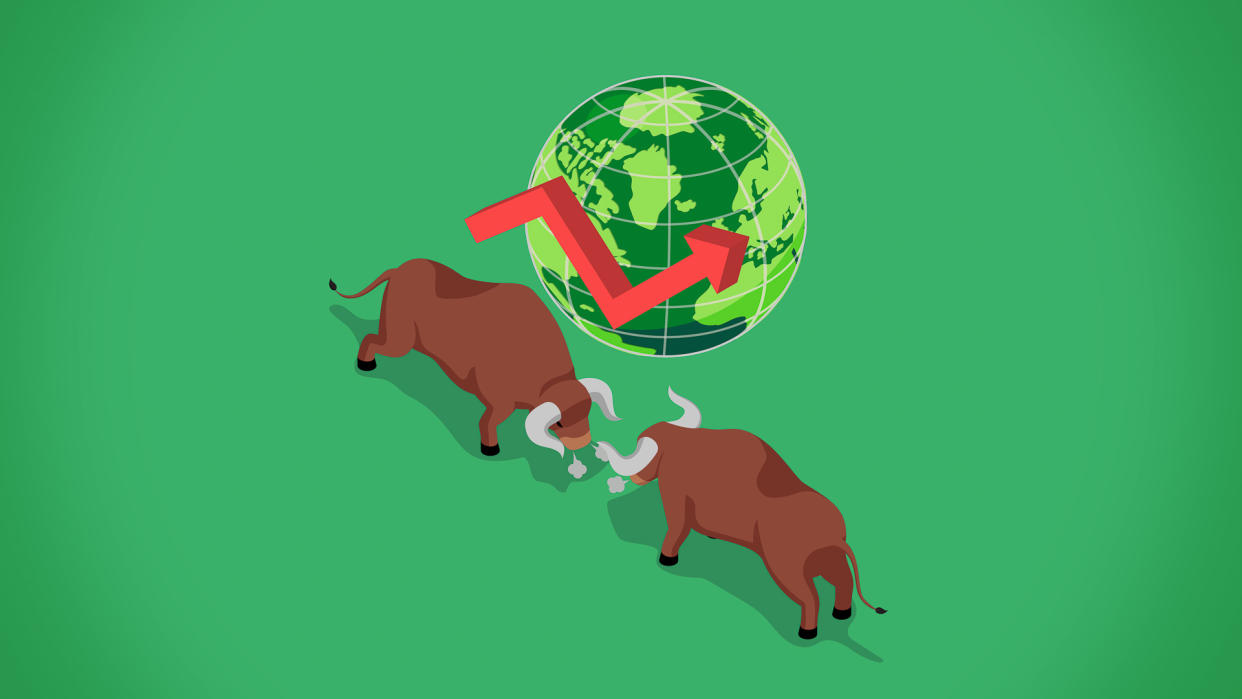What Is a Bull Market?

The stock market, like other tradable asset markets such as commodities and cryptocurrencies, goes through cycles of bull markets and bear markets. These boom and bust cycles have repeated over and over throughout history, from events such as the Great Depression and tulip mania to the dot-com bubble and the Great Financial Crisis.
More recently, the COVID-19 pandemic resulted in one of the quickest market downturns ever. The market’s response? A monumental bull run, driven by government stimulus. However, the process is unending. The knock-on effect faced by global economies has been increasingly persistent inflationary pressures, marking an end to the most recent bull market.
To understand the cycles of the stock market, it’s important to know how bull markets work.
What Is a Bull Market?
The broad definition of a bull market is when an asset increases 20% from its prior lows and begins to sustain a reliable uptrend. Basically, it’s a prolonged period where asset values continue to increase. The associated term “bull” can be connected with this unrelenting charging forward of price.
This can sometimes be followed by unrealistic expectations that translate into asset bubbles where valuation metrics no longer make sense. As a result, sharp declines can occur, and bear markets take over.
Bull markets are part of the recurring cycles in economic markets. However, timing their moves to correspond with market cyclicality is nearly impossible for most people. Bull markets can be great times to make money, but if investors are overexposed, they can face major downswings.
How Do Bull Markets Work?
Bull markets are supported by a number of factors. Wage growth, capital inflows, minimal unemployment, strong consumer spending and increasing corporate profits are all factors that lead to sustainable bull runs.
When the opposite occurs, however, markets can sustain rapid falls, dampened outlooks and weaker demand for products or services that send markets spiraling downward.
How Long Do Bull Markets Last?
Stock markets witnessed their longest-ever bull run from 2009 to 2020, but this was a historic outlier. It’s important to discount this recency bias, as the average timeframe for a bull market is just 3.8 years.
What Are the Benefits of Bull Markets?
The main benefit is a favorable appreciation in asset prices for investors. The average bull market returns are in the region of 112%, which poses an attractive opportunity to earn a return on money.
Should You Buy During a Bull Market?
Bull markets can be good times to buy, considering the typical return is 112% from start to finish. That said, timing the markets can be extremely difficult. If an individual makes an investment near the end of a bull run, they could face significant losses.
Additionally, it’s important to be aware that picking individual stocks will carry far more risk, as it exposes investors to increased volatility. A good strategy to employ is dollar-cost averaging into index funds over the course of one’s lifetime, as historically, U.S. indexes have continued to surpass all-time highs.
Depending on the environment, certain sectors tend to perform better than others, so it’s useful to diversify a portfolio and get exposure to a broad range of assets.
What Is the Difference Between a Bull and Bear Market?
Simply put, bull markets correlate with increasing asset prices, whereas bear markets correlate with decreasing asset prices.
Typically, a bear market is defined as the point where an asset or stock market index such as the S&P 500 has declined by more than 20% from its highs. On the other side of the coin is a bull market, where the same defined asset or index fund has gained 20% from its lows.
However, these are loosely used methods to define overall market sentiment.
What Causes Bull and Bear Markets?
The most effective primary indicators of bull and bear markets are current economic conditions. These include factors such as the unemployment rate, consumer spending, debt levels, corporate earnings and government stimulus.
When these measures point toward continuous and sustainable growth, investor sentiment and consumer confidence will remain positive, sustaining a bull market. In contrast, when things take a turn for the worse, consumers will temper their future expectations. This can result in tightened spending habits and fewer sales for companies as uncertainty rises — a bear market.
Bear markets can also be far more sudden than bull markets when a “black swan” event occurs, which refers to unforeseeable occurrences. An example of this is COVID-19, where the majority of investors didn’t predict the knock-on consequences such as the spread of the virus and lockdowns sweeping nations all over the world.
Do Bull Markets Last Longer Than Bear Markets?
While bull markets tend to last for almost four years on average, for bear markets, the average duration is just 9.6 months.
The number of bull and bear markets throughout stock market history has more or less been equal.
Final Take
Bull markets are a natural aspect of financial markets and investing in general. They can act as excellent opportunities for risk-taking investors to earn healthy returns over long periods, once risk is managed appropriately.
FAQ
Here are some common questions people ask about bull markets.
What defines a bull market?
A bull market is defined as a period of time where asset prices are increasing. Many different financial products can be connected to bull and bear markets, including stocks, cryptocurrencies and commodities.
What is a bull market and what causes it?
Bull markets are when persistent uptrends in the price of assets occur, often driven by positive economic conditions that favor both businesses and consumers.
What is a bull market trap?
A bull market trap is when the price of an asset rebounds significantly but the rise in price isn't sustainable. A reversal will cause the asset to revert to the downtrend, where the price can fall significantly lower in some circumstances.
This article originally appeared on GOBankingRates.com: What Is a Bull Market?
